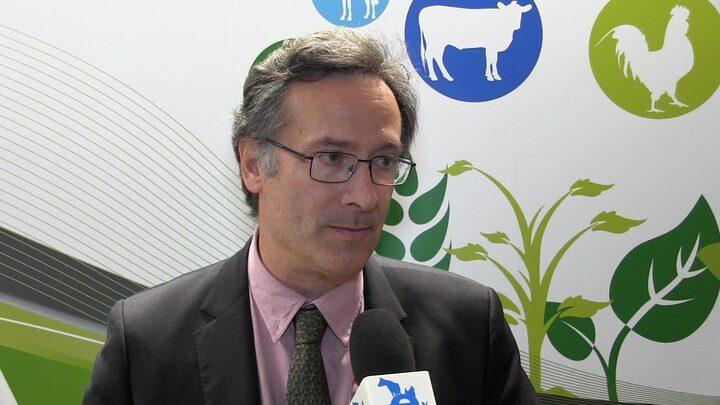Incessant prolapse cases
Published: March 18, 2015
How does high crude protein levels in feed of 48 weeks laying birds leads to over 61% Mortality related issues of prolapse with all other factors such as enteric diseases, lightening and debeaking are in check?
Related topics:
Mentioned in this news release:

Anonymous
Recommend
Comment
Share
2 de agosto de 2015
important things to consider
1, body frame development
2, uniformity
3, light stimulation and intensity
4,nutrition mainly Ca balance and the amount of fibers including in the feed
the above described are the main cause of prolapse if any deviation happened.
Recommend
Reply
Toyoor Barekat co
2 de agosto de 2015
usually prolapse occurs either in start of production or in mid of age.the first one is totally is depend to rearing
period specially first 6 weeks growth including frame size and growth of critical organs. other factor in rearing
period is early sexual maturity when the reproductive organ is not complete and ready to start production .in this time feeding high protein feed produces larger eggs that cant pass .hence preparing feed as digestive amino acid and high energy level is recommended .i do not believe that in this age there be high level of fat in body composition and become the reason for prolapse .in this time inducing good body condition (muscle-fat reservior and medullary bone)before light stimulating is necessary for prolapse prevention .
in mid age suddenly increase in egg size because of increasing of feed consumption after low temprature in house or lowering feed density of energy or obesity (highy fat in abdominal cavity).
Recommend
Reply
Recommend
Reply
3 de agosto de 2015
If your feeds is high in protein and fats, more lighting hours than recommended (16 hours), intensity of the light is very high, then, these resulted to bigger eggs. There is higher chance of prolapse incidence if eggs are too big than the standard in relation to age. On the other hand, enteric disease is due to excessive nitrogen that goes through the intestine. Pathogenic bacteria like clostridium will use this excess nitrogen or protein to proliferate, thus, disease occur. Formulate feeds based on digestible amino acid and check your management (lighting program).
Recommend
Reply


Feed Granulometry and the Importance of Feed Particle Size in Layers
Suggested link
Recommend
Reply

3 de agosto de 2015
In my experience high % of prolapse was found in particular breeds. Now a days all are feeding for profit
and would not make mistakes as mentioned above regarding lighting and feed quality. I have never seen under weight pullets die of prolapse. It can happen if some one give more feed to under weight pullets to put on weight with out body frame on the latter period of grower period.
Recommend
Reply
3 de agosto de 2015
Even if prolapse is genetic ,my believe from experience is that nutritionally it can be controlled and monitored.
By the addition of choline chloride to supplement the ones present in the feed premixes would help in no small measure in reducing prolapse incidences. From chick mash to laying mashes choline chloride should be added to the feeds since this would help to control weight gain and free the reproductive tract from abnormal body fat deposition.
Recommend
Reply
3 de agosto de 2015
Feed allotments, bodyweight and egg production are 3 factors to be considered in flocks with prolapse. Most farmers feed birds base on age of birds not considering the production and bodyweight of the body, the lead to accumulation of fat with resultant prolapse condition. Dietary adjustment is the best bet to control it than addition of any additives.
Recommend
Reply
DiVet , Bulgaria Vet.Company
4 de agosto de 2015
Dear Doctor ,Please check Micotoxines .
Or add 2 kg per ton feed UltraFed Layer Premium
from Geohellas Greece.
Recommend
Reply
4 de agosto de 2015
One of my client shared an interesting experience with me. One of his flock suffered with this disease for which I made changes in the formula which obviously couldn't stop it 100% just reduced. Few days later I called him n asked about his flock status upon which he replied it's 100% cured by adjusting the light intensity. For this he replaced all his white lights with lowest intense red bulbs which we locally call them as zero powered bulbs(night bulbs). It was an interesting remedy for me n I never got 100% stop with of any of nutritional or managemental technique. For me it was really amazing n anyone suffering may apply it to his flock n respond me back. I'll be waiting for responses.
Recommend
Reply

4 de agosto de 2015
Prolapse can be corrected:
applying pelleted feed at the stage of growth and monitoring the growth curve. We must ensure that the pullets have the optimal weight at first light stimulation.
Please contact me for more information
joaquinp17@gmail.com
Recommend
Reply
4 de agosto de 2015
The people are talking about the protein value along with fibre inclusion in the diet ,but irrespective of above speculation no body had highlighted that there is a chance of developing Severe ECOLI infection in the flock which could be the principal reason to precipitate rampant prolapse.Hence without doing any step further change the litter ,disinfect the house and do appropriate medication with prophylactic measure to fight out E.Coli.on priority basis.
Recommend
Reply
6 de agosto de 2015
If the pen is well sanitaze, an propal feed management, chick density, an propal routine drugs are given as well as vaccinations.I beleaved they won't be such case.
Recommend
Reply
7 de agosto de 2015
Firstly,I would like to thanks, on behalf of myself & also Avian vet from Bangladesh to all professionals and creator of such kind of discussion,which attracts more participants to discuss .
Prolapse ,itself is not a disease, it should be more appropriate to define as a condition or symptom of another fault or disease.I agree with everyone's discussion except few,because this is a problem of multifactoral causes , moreover it will appear only in laying birds,not in pullet,as per i know.
Somebody mentioned it is curable,some one not. I think it depend on the causing factors,if it is the result of faulty managements of the growing stage, it will be difficult to control in laying
stage .Preconditions of light stimulation is one of the most important factor for prolapse ,it is more safe to start lighting on the basis of target body weight, uniformity rather than the suggested age of starting light . Light intensity is also another cause,high intensity of light is beneficial ,only for few days of starting light, then it should be reduced to low, other ways there is more chance to suffer prolapse , one friend from Pakistan suggested replacement of red "0" power night bulb ,yes i agree with you,I have also such kind of experience like you, frequency (distance) of light should be minimum 10 feet from each-other.
In brief, it is wise to find out the provable causes then try to solve accordingly.There is no fixed causes,it varies from farm to farm, managements, breeds,Environment etc.
Recommend
Reply
.jpg&w=3840&q=75)

Practical AMINONIR® Application: From sampling to economic benefits
Suggested link
7 de agosto de 2015
08/07/2015 | Firstly,I would like to thanks, on behalf of myself & also Avian vet from Bangladesh to all professionals and creator of such kind of discussion,which attracts more participants to discuss .
Prolapse ,itself is not a disease, it should be more appropriate to define as a condition or symptom of another fault or disease.I agree with everyone's discussion except few,because this is a problem of multifactoral causes , moreover it will appear only in laying birds,not in pullet,as per i know.
Somebody mentioned it is curable,some one not. I think it depend on the causing factors,if it is the result of faulty managements of the growing stage, it will be difficult to control in laying
stage .Preconditions of light stimulation is one of the most important factor for prolapse ,it is more safe to start lighting on the basis of target body weight, uniformity rather than the suggested age of starting light . Light intensity is also another cause,high intensity of light is beneficial ,only for few days of starting light, then it should be reduced to low, other ways there is more chance to suffer prolapse , one friend from Pakistan suggested replacement of red "0" power night bulb ,yes i agree with you,I have also such kind of experience like you, frequency (distance) of light should be minimum 10 feet from each-other.
In brief, it is wise to find out the provable causes then try to solve accordingly.There is no fixed causes,it varies from farm to farm, managements, breeds,Environment etc.
Recommend
Reply
7 de agosto de 2015
Nice comments. I have learnt something new. Oh my God, am in love with Animal Science Studies and Researches. Just graduated from my first degree in Animal Science. Need a Sponsor for me to acquire more knowledge on Animal Science. You can be of help. Please contact me benmac4sure@yahoo.com.
Recommend
Reply
8 de agosto de 2015
This case should be treated in the growing period.follow the management guide of bird nutrition recomendation.follow weekly body weight system and be sure they have at least 80% performance.don't change to grower feed if by 6 weeks your bird are not on target.this mistake is common with most farmer bcs the cost of feed.secondly follow strictly the recommendation of methionine& choline chloride in developer& pre- layer feed.wish you luck
Recommend
Reply
8 de agosto de 2015
For already suffering flocks: we have a product called laymore, contains yeast proteinated form of chromium with a herb leptadina reticulata. Our customer feed back in India, more than 50% of lay occurs in one time.
Easy expulsion of eggs.
Organic chromium improves digestibility of organic matter by 5 to 7%.
For chicks: we have peptides obtained from nucleus of yeast Saccharomyces cervisiae. Which is the rich source of amino acids, peptides and easily digestible proteins.
Recommend
Reply
Recommend
Reply

8 de agosto de 2015
We have a very effective product for prolapse in Broiler Breeders and Commercial Layers.
Antiprol - a herbal liquid preparation to be given orally.
Antiprol normalizes the peristaltic movement of GIT by acting on the receptor.
Dose - 10-15ml/100 birds for 5-7 days.
Recommend
Reply

Would you like to discuss another topic? Create a new post to engage with experts in the community.






.jpg&w=3840&q=75)

















